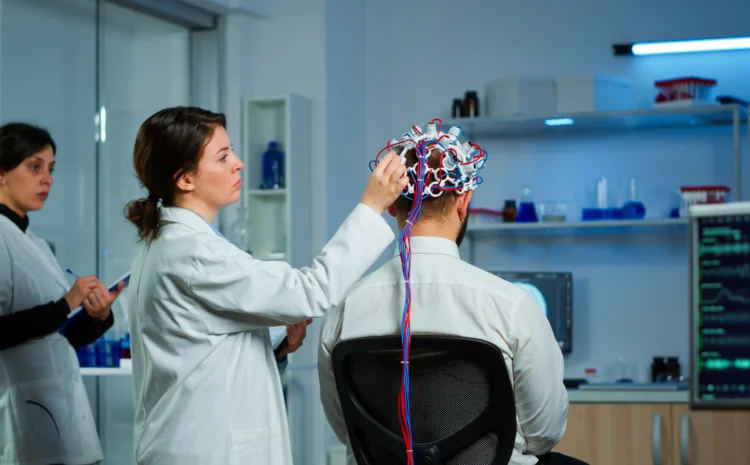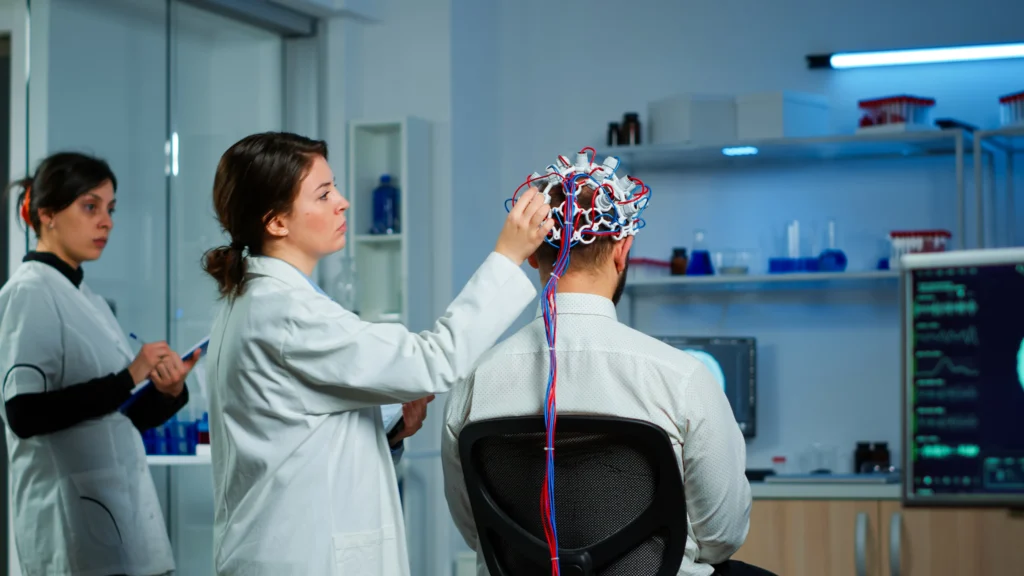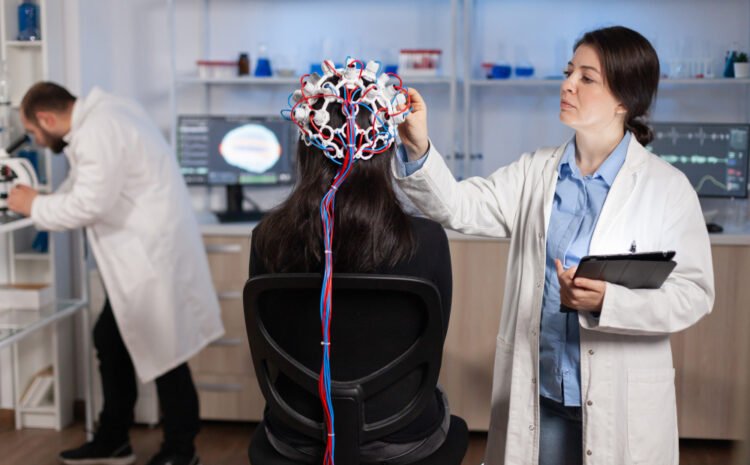
What Does a Neurologist Doctor Do? A Complete Guide
When we think of the human body’s most intricate and powerful organ, the brain undoubtedly comes to mind. It controls everything we do from simple tasks like breathing and walking to complex processes like thinking, feeling, and remembering. When something goes wrong with the nervous system, you may need to see a specialist who understands the intricate network of the brain, spinal cord, and nerves. That specialist is a neurologist.
In this comprehensive guide, we’ll explore the essential role of a neurologist, the conditions they treat, the tools they use, and what to expect during a visit. Whether you’re experiencing symptoms that suggest a neurological problem or simply want to understand more about this fascinating medical field, this blog will give you an in-depth look into the world of neurology.

What Is a Neurologist?
A neurologist is a medical doctor who specialises in diagnosing, treating, and managing disorders of the nervous system. This includes the brain, spinal cord, and peripheral nerves — the intricate highway of signals that allow your body to function properly. Neurologists undergo extensive education and training, including:
- A four-year undergraduate degree (often in biology or a related science)
- Four years of medical school
- A one-year internship (typically in internal medicine)
- A three-year residency in neurology
Some neurologists pursue further subspecialty training (fellowships) in areas such as epilepsy, neuromuscular diseases, stroke, multiple sclerosis, or pediatric neurology.
What Conditions Does a Neurologist Treat?
A neurologist manages a wide range of neurological disorders, including both acute and chronic conditions. Here are some of the most common ones:
1. Migraines and Headaches
Severe or chronic headaches, especially migraines, are one of the most frequent reasons patients visit a neurologist. Neurologists can differentiate between types of headaches and recommend targeted treatments.
2. Epilepsy and Seizures
Neurologists are central in diagnosing and treating epilepsy, a condition characterised by unprovoked, recurring seizures. They may use EEGs (electroencephalograms) to study brain wave activity and prescribe anti-seizure medications.
3. Stroke
A stroke occurs when blood flow to the brain is interrupted. Neurologists are often involved in emergency stroke care and long-term rehabilitation. Time is critical in stroke treatment, and neurologists use imaging tools like CT scans and MRIs to assess brain damage quickly.
4. Multiple Sclerosis (MS)
MS is an autoimmune disease that affects the central nervous system. Neurologists play a key role in diagnosing MS through imaging and spinal fluid tests and managing the disease with medications that slow progression.
5. Parkinson’s Disease
This progressive neurological condition affects movement and often causes tremors, stiffness, and balance issues. Neurologists help patients manage symptoms with medications, therapy, and sometimes surgical options like deep brain stimulation.
6. Alzheimer’s Disease and Dementia
Memory disorders, especially Alzheimer’s disease, are increasingly common. Neurologists assess cognitive decline through memory tests, brain scans, and other diagnostic tools to distinguish between different types of dementia.
7. Neuropathy
Peripheral neuropathy, often caused by diabetes, infections, or autoimmune conditions, involves nerve damage that causes pain, numbness, and weakness, usually in the hands or feet.
Diagnostic Tools and Techniques Use
Neurologists have an array of tools to evaluate and diagnose nervous system disorders. These include:
- MRI (Magnetic Resonance Imaging): Offers detailed brain and spinal cord images.
- CT Scans: Useful in emergency settings to detect strokes or trauma.
- EEG (Electroencephalogram): Records electrical activity in the brain.
- EMG (Electromyography): Evaluates electrical activity in muscles and nerves.
- Lumbar Puncture (Spinal Tap): Analyses cerebrospinal fluid for signs of infection or inflammation.
- Blood Tests: Rule out infections, autoimmune diseases, or vitamin deficiencies.
These diagnostic tools help neurologists form a clear picture of the condition and determine the best course of treatment.
What to Expect During a Neurologist Visit
If you’ve been referred to a neurologist, here’s what you can typically expect during your first appointment:
1. Medical History Review
The neurologist will begin by asking about your symptoms, their frequency, duration, and what makes them better or worse. They’ll also inquire about your family history and previous health issues.
2. Neurological Examination
This physical exam assesses the health of your nervous system. It may include tests of:
- Muscle strength and tone
- Reflexes
- Coordination and balance
- Sensation (e.g., touch, pain, temperature)
- Cognitive abilities (e.g., memory, attention)
3. Further Testing
Depending on the exam results, the neurologist might order additional tests such as MRIs, EEGs, or blood work.
4. Diagnosis and Treatment Plan
Once a diagnosis is made, the neurologist will discuss your treatment options. This may include medications, physical therapy, lifestyle changes, or referrals to other specialists.
When Should You See a Neurologist?
You should consider seeing a neurologist if you experience any of the following symptoms regularly or without a clear cause:
- Persistent or severe headaches
- Frequent or unexplained seizures
- Sudden vision changes
- Weakness or numbness in one side of the body
- Difficulty walking or maintaining balance
- Unexplained dizziness or vertigo
- Memory loss or confusion
- Tremors or involuntary movements
- Chronic nerve pain
Early intervention can significantly improve outcomes in many neurological conditions. If your primary care doctor recommends seeing a specialist, don’t delay.
Subspecialties Within Neurology
Neurology is a vast field, and many neurologists choose to specialise further. Some subspecialties include:
- Pediatric Neurology: Focuses on children with neurological disorders.
- Neuro-oncology: Deals with brain and spinal cord tumours.
- Neurocritical Care: Manages patients with life-threatening neurological conditions.
- Vascular Neurology: Specialises in stroke care and prevention.
- Neuromuscular Medicine: Focuses on diseases affecting nerves and muscles.
These subspecialists bring advanced expertise to complex cases, ensuring patients get the most precise and effective care possible.
Final Thoughts
The human nervous system is a marvel of biological engineering, and when something goes wrong, it takes a highly trained expert to decode the problem and offer solutions. That’s the role of a neurologist. From treating migraines to managing progressive diseases like Parkinson’s and Alzheimer’s, neurologists are at the forefront of medical science and patient care.
If you’re facing symptoms that suggest a neurological issue, don’t hesitate to seek help. The earlier a condition is identified and managed, the better your chances of maintaining your quality of life.
A neurologist does far more than just analyse brain scans; they are compassionate problem solvers, investigators of the nervous system, and champions for their patients’ cognitive and physical well-being.



